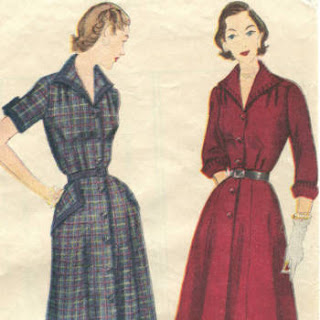1. Environmental Protection

Lakota dressBuckskin, glass beads, threadCa. 1870
In its basic form, this is a typical dress worn by Plains Indian women. It consists of three assembled parts: the front, the back and the yoke. These three pieces give the garment a T- shape outline. Very likely this dress was made during the winter months, when the cold forced people to stay inside and work on clothing.
This dress is a good example of the great diligence and talent on the part of the women who made it. It is estimated that it took 300,000 small glass beads to complete the decoration.
In February 1934, Ms. Olive Dean wore this dress to a costume ball in Washington, D.C. She was awarded the first prize for the most outstanding costume by the two judges, Anna Ball, Franklin D. Roosevelt’s daughter and Cornelius Vanderbilt, Jr.
2. Decoration

The Decorative ornament plate shown left has typical Egyptian style
The Decorative ornament plate shown left has typical Egyptian style patterns found on male sash girdles. Remember winged and fanned decoration was a universal feature of Egyptian pattern on dress. Typical characteristic Egyptian elements included the hawk, the beetle, the lotus flower and geometric patterns that were cleverly entwined.
In many ways these all over intertwined repeat patterns are similar to motifs found in other civilisations including Aztec and Celtic forms.The patterns were also used to make beaded networks worn over garments. This meant pattern could be transferred easily to a freshly laundered plain garment.
Above right we have one of the coffin layers of the boy King Tutankhamun. Note that rich intense pattern that could be incorporated into your own collar designs.
Glass and enamel were favourite techniques for decoration in the Land of the Pharaohs. The famous vulture collar laid on the mummy chest of Tutankhamun was primarily inlaid with blue and coral red coloured glass. The glass was possibly of high value as a product in itself in Egyptian eyes and was inlaid into the same solid gold as any other item encrusted with true precious gems. The birth of costume jewellery may have occurred in Egypt.
http://www.fashion-era.com/ancient_costume/egyptian_fancy_dress_4_warrior_men.htm
3. Gender Differentiation


the late Roman Empire, c 300 CE, to the beginning of the Renaissance, c 1500.
Costume Components - Man:
The tunic was the basic garment - a narrow. long-sleeved garment that was worn to the ankle. Early tunics were full, later, more fitted. For the lower classes, it was the everyday working garment. For the upper classes, it was the undergarment for some of the richest clothing in history. The tunic was a derivation of the ancient Roman tunica talaris, or tunic to the ankles. The more active wearer would gird it up to the shins or knees with a thin belt. The sleeve and hem length would change according to the class of the wearer and the weather. The primary fabric was natural linen or wool. Both would be in a plain weave. Silk was also used.
The dalmatic was an over-tunic with shorter, fuller sleeves. Both tunic and dalmatic were decorated with embroidered bands or clavi - a Roman influence - and segmentae, square or circular decorated medallions; later, textiles were patterned all over.
Tunics were belted and, for both men and women, adorned with the pallium - a long, embroidered band that hung from a circular collar.
Costume Components - Women:
A white undertunic was layered under a coloured tunic and Roman-style palla or cloak until 10th century. After the 7th century, double-layered tunics were worn, the undertunic with long, fitted sleeves. The dalmatic replaced the outer tunic, with elbow-length wide sleeves and reaching to the knee.
The highly decorative embroidered pallium, seen in the illustration at left, was a circle of fabric dropped over the head with tabs hanging front and back, .
Hair was usually covered: veils, turbans with a crown, or a padded roll were worn.
http://www.costumes.org/history/100pages/byzantinelinks.htm
4. Group Membership
In 1878, when The Christian Mission became in reality, the newly named Salvation Army, the familiar trappings of The Great Salvation War began to appear. Military terms became standard - church halls became corps; giving in the offering was called "firing a cartridge". Flags, badges, brass bands and uniforms were added together with a military style rank system for its staff. According to the years of service, position level of responsibility in the organisation, trimmings worn on the uniform indicated rank.Even without religious motivation, the wearing of military ceremonial uniforms was widely popular among the working class men in the late 19th century in Britain.
At first these marching Salvationists were anything but uniform, dressed in an odd assortment of clothing and headgear. It took almost two years to standardise Salvation Army uniform, but by the beginning of 1880 a standard navy blue serge uniform was introduced for both men and women. Men wore a high neck tunic with a stiff collar over a scarlet jersey. Their headgear was a military cap with a red band, on which the words The Salvation Army had been worked in gold letters. Women wore long navy skirts, close-fitting high neck tunics with white lace-edge collar. The large black straw bonnet was Catherine Booth's idea. Cheap, durable, protective and solidly unworldly, the bonnet with its red, band and huge ribbon bow became a well known symbol of The Great Salvation War.
It stands for:
A commitment in the war against evil.
As a personal testimony to the wearer's own Christian faith and practice.
And signifies the availability of the Salvationist to anyone needing a helping hand and listening ear.
5. Ceremonialism

Princess Anne The Princess Royal - Early days
Princess Anne and has often been chided for her dress sense and interest in fashion. The fact is Princess Anne is a classic no nonsense dresser and likes to stick with styles she feels happiest wearing. Those styles work well for her life of meeting people and they also give her years of wear.
She has had an enviable figure for many years and during her engagement to Lieutenant Mark Phillips she was photographed. She revealed herself as a dazzling young woman.
The images of Princess Anne stunned me at the time, yet these same photos of her are often long forgotten probably because she divorced Mark Phillips and moved on to a new marriage.
http://www.fashion-era.com/royalty/princess_anne_1.htm
6. Sexual Enhancement
 Rose McGowan's see-through "dress"
Rose McGowan's see-through "dress"Accompanying then-boyfriend Marilyn Manson down the 1998 VMAs red carpet, actress Rose McGowan attempted the Liz Hurley method of career-enhancement by sporting possibly the flimsiest "dress" ever created. Not even Marilyn's latex alien sex fiend outfit, worn later on stage, could upstage her.
http://images.google.com/imgres?imgurl=http://www.virginmedia.com/images/rose-mcgowan-gal-mtv.jpg&imgrefurl














